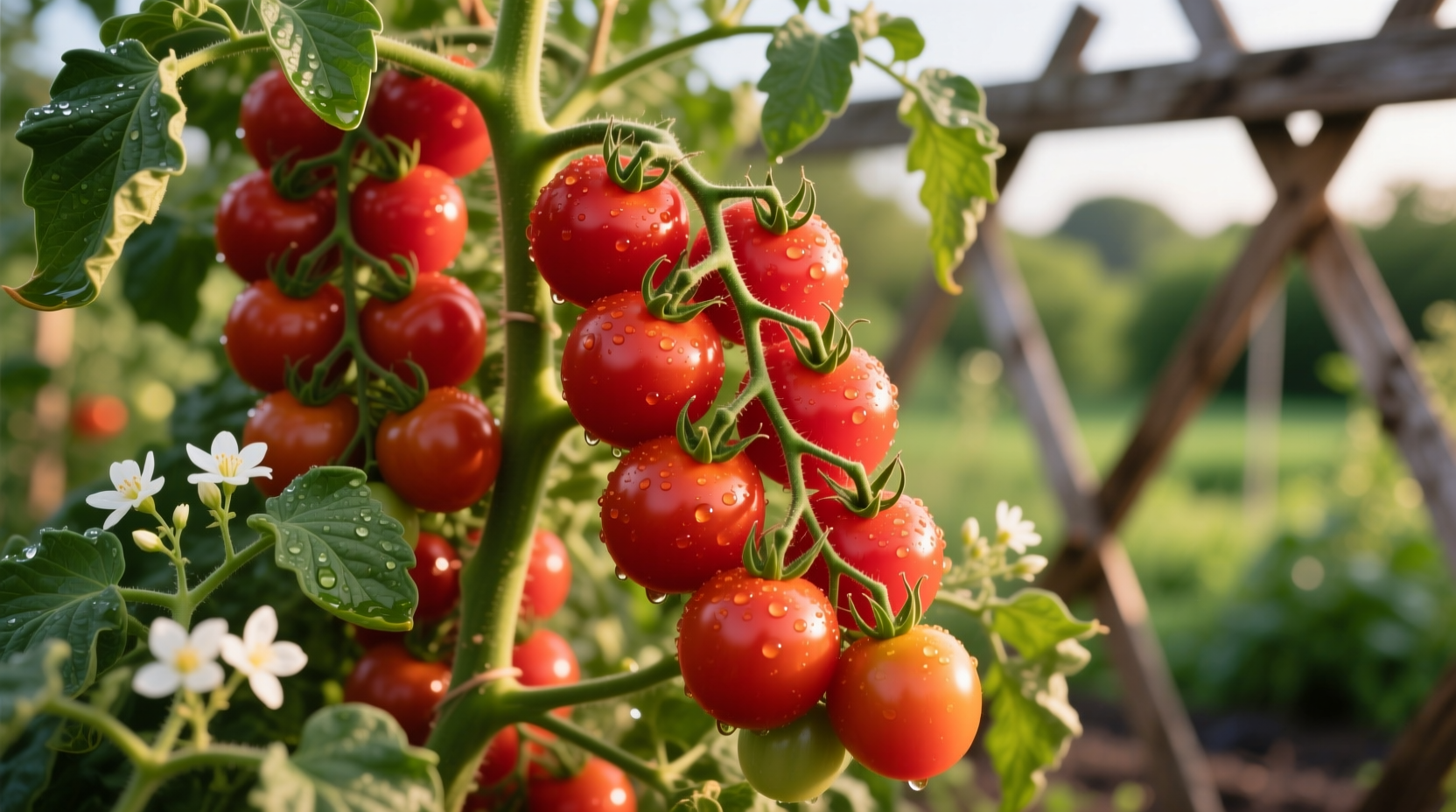Why Gardeners Choose Juliet Tomato Seeds
When you select Juliet tomato seeds for your garden, you're choosing a variety that has earned recognition from the All-America Selections (AAS) for its outstanding performance. Unlike many cherry tomatoes that split easily, Juliet produces firm, oval-shaped fruits that resist cracking even during inconsistent watering patterns—a common challenge for home gardeners.
Developed by Seminis (now part of Bayer Vegetable Seeds), Juliet was specifically bred for disease resistance while maintaining exceptional flavor. This grape tomato variety consistently outperforms others in university extension trials across multiple growing zones.

Juliet vs. Other Cherry Tomato Varieties: Key Differences
| Variety | Fruit Shape | Disease Resistance | Days to Maturity | Notable Weakness |
|---|---|---|---|---|
| Juliet | Elongated grape | Fusarium wilt (races 1-2), Verticillium wilt, Tomato Spotted Wilt Virus | 60-70 | None significant |
| Sun Gold | Rounded cherry | Limited | 57-65 | Cracks easily in rain |
| Black Cherry | Rounded | Moderate | 65-75 | Requires consistent watering |
| Isis Candy | Rounded | Some | 65 | Susceptible to blossom end rot |
This comparison from North Carolina State University Extension shows why Juliet stands out for home gardeners seeking reliability. Its comprehensive disease resistance package protects against common soil-borne pathogens that frequently devastate other cherry tomato varieties.
Starting Juliet Tomato Seeds Successfully
Timing your seed starting correctly determines your entire growing season's success. For most regions, begin Juliet tomato seeds indoors 6-8 weeks before your last expected frost date. The University of Maryland Extension recommends maintaining soil temperatures between 70-80°F (21-27°C) for optimal germination.
Step-by-Step Seed Starting Guide
- Fill seed trays with sterile seed-starting mix (not garden soil)
- Plant seeds 1/4 inch deep and water gently
- Place in warm location (70-80°F) until sprouts appear (5-10 days)
- Move to bright light source immediately after sprouting
- Water when top inch of soil feels dry
- Begin fertilizing with half-strength liquid fertilizer when first true leaves appear
- Harden off plants for 7-10 days before transplanting outdoors
Optimal Growing Conditions for Juliet Tomatoes
Juliet tomatoes thrive with proper spacing and support. Unlike determinate varieties, Juliet is indeterminate, meaning it will continue growing and producing fruit until killed by frost. This growth habit requires different care than bush-type tomatoes.
Soil Requirements
Prepare your garden bed with 3-4 inches of compost worked into the top 6-8 inches of soil. Juliet tomatoes prefer slightly acidic soil with a pH between 6.2-6.8. The University of Minnesota Extension recommends getting a soil test before planting to determine specific nutrient needs.
Watering Strategy
Consistent moisture prevents common problems like blossom end rot and fruit cracking. Water Juliet plants deeply 1-2 times per week rather than frequent shallow watering. Aim for 1-1.5 inches of water per week, increasing during hot, dry periods. Mulching with straw or shredded leaves helps maintain consistent soil moisture.
Managing Common Challenges
While Juliet offers superior disease resistance compared to most cherry tomatoes, proper cultural practices further protect your plants.
Pest Prevention Techniques
- Rotate planting locations yearly to prevent soil-borne disease buildup
- Use floating row covers early in the season to prevent insect damage
- Remove lower leaves that touch soil to prevent fungal diseases
- Inspect plants regularly for signs of pests like tomato hornworms
According to Cornell University's Home Gardening Guide, proper air circulation around Juliet plants significantly reduces fungal disease pressure. Space plants at least 24-36 inches apart in rows 3-4 feet apart.
Harvesting and Enjoying Your Juliet Tomatoes
Juliet tomatoes reach peak flavor when fully vine-ripened. Unlike some varieties that continue ripening after picking, Juliet tomatoes develop their best sugar content when left on the plant until completely orange-red.
Harvest Timing Tips
- Check plants daily once fruit begins coloring
- Pick when fruits show uniform color and slight give when gently squeezed
- Harvest in morning when sugars are highest
- Use scissors or pruners to avoid damaging vines
For extended harvest, pick fruit at the "breaker stage" (when first color appears) and allow to ripen indoors away from direct sunlight. Juliet's thick skin makes it particularly suitable for this method without sacrificing flavor.
Maximizing Your Juliet Tomato Yield
Professional growers achieve higher yields through specific techniques you can implement in your home garden:
- Pruning: Remove suckers below the first flower cluster to direct energy to fruit production
- Fertilizing: Apply balanced organic fertilizer when first flowers appear and after first harvest
- Pollination boost: Gently shake flowering branches midday to improve fruit set
- End-of-season push: Remove new flower clusters 4 weeks before first expected frost to focus energy on ripening existing fruit
Following these practices, home gardeners typically harvest 10-15 pounds of tomatoes per Juliet plant throughout the growing season, with peak production occurring 70-90 days after transplanting.
Frequently Asked Questions
Here are answers to common questions about growing Juliet tomato seeds:











 浙公网安备
33010002000092号
浙公网安备
33010002000092号 浙B2-20120091-4
浙B2-20120091-4